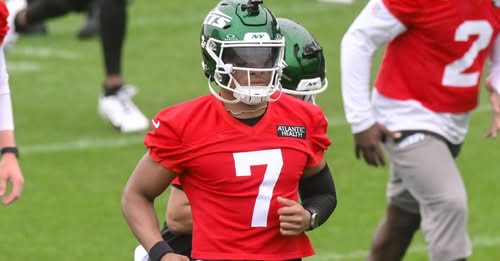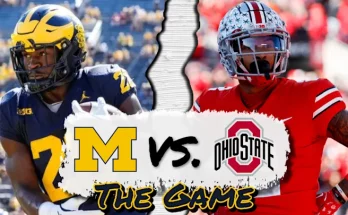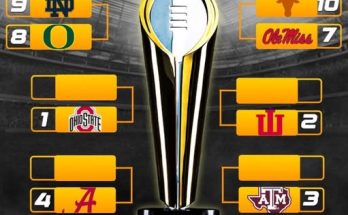The New York Jets faced a sudden jolt of concern on Thursday morning as their quarterback, Justin Fields, was carted off the practice field following what appeared to be a serious leg injury. The incident immediately sent waves of worry through the Jets organization, the coaching staff, fans, and the entire NFL community, given Fields’ pivotal role in the team’s aspirations for the upcoming season. The gravity of the situation was apparent as medical personnel swiftly attended to Fields, and the sight of the young quarterback being taken away on a cart raised alarm bells about the extent of the injury and its potential impact on both his career and the Jets’ trajectory.
Justin Fields was acquired by the Jets with high hopes. A highly touted talent coming out of Ohio State, Fields had shown flashes of brilliance and immense potential early in his career with the Chicago Bears. Known for his dual-threat capabilities—his ability to extend plays with his legs as well as his arm—Fields represented the kind of dynamic quarterback the Jets hoped could lead their franchise back to playoff contention. The move to New York was seen as an opportunity for Fields to thrive in a new environment with a team ready to build around his unique skill set.
However, the harsh reality of professional football is its physical toll, and injuries are an unfortunate part of the game. On this particular Thursday, as the Jets prepared for what should have been a routine practice, Fields took a hit or suffered a mishap that resulted in him not being able to put weight on his leg. Details about the exact moment of injury were not immediately clear, but the reaction was unmistakable. His teammates and coaches quickly gathered around as medical staff rushed to assess the situation. The team’s decision to use a cart rather than letting Fields walk off the field spoke volumes about the severity of the injury.
Injuries to key players like quarterbacks are always a major cause for concern because the position is so critical to a team’s success. Quarterbacks carry not only the burden of leadership on the field but also the responsibility of executing complex offensive schemes. Losing a quarterback, especially one with as much promise as Fields, can derail an entire season. It forces a team to recalibrate its strategy, often thrusting backup quarterbacks into the spotlight without the benefit of extensive preparation. For the Jets, this injury could present a significant challenge depending on its severity and the expected recovery time.
Speculation naturally turned to the nature of the injury. While the team was cautious in its initial statements, fans and analysts immediately wondered whether Fields had suffered anything as serious as a fracture or ligament damage. The leg is critical for a quarterback, particularly one like Fields who relies heavily on his mobility and athleticism. Injuries such as ACL tears, fractures, or severe sprains can require months of recovery and rehabilitation, sidelining a player for a substantial portion of the season or even longer. Conversely, a less severe injury might only keep Fields out for a few weeks but still could impact his performance or readiness.
The timing of the injury is also significant. With the NFL season approaching, every practice and preseason game is a vital opportunity for players to prepare, build chemistry, and sharpen their skills. An injury at this stage disrupts the rhythm of preparation and can affect the overall team morale. Coaches must adjust their game plans and work on contingency measures to ensure the team remains competitive. For Fields, who was likely eager to prove himself and establish his place as the Jets’ franchise quarterback, this setback could not have come at a worse time.
The Jets’ medical and coaching staff immediately went into crisis management mode. Quick and accurate diagnosis is crucial to determine the best course of action for treatment and recovery. Advanced imaging techniques such as MRI and X-rays would be necessary to fully understand the damage. Depending on the results, the team’s doctors would develop a rehabilitation plan tailored to Fields’ needs, balancing the urgency to return to play with the importance of long-term health and durability.
Beyond the physical implications, the psychological impact of such an injury on a young athlete cannot be underestimated. Recovering from a significant injury requires mental toughness and resilience. The uncertainty of recovery timelines, the pain of physical therapy, and the fear of re-injury can weigh heavily on a player. For Fields, who is known for his competitive spirit, maintaining a positive mindset and focusing on rehabilitation will be essential to returning to form.
This injury also raises broader questions about the Jets’ quarterback situation and their depth chart. Backup quarterbacks will suddenly find themselves under increased pressure to perform at a high level with limited preparation. The coaching staff will have to work closely with these players to get them ready to step in, knowing that their performance could determine the team’s fortunes for the season. The team’s front office might also revisit their options in the trade market or free agency if Fields’ injury turns out to be long-term.
For the Jets fans, the injury was a heartbreaking moment. Many had been excited about the new direction the team was headed with Fields under center. His electrifying plays and potential for growth brought hope to a franchise that has struggled to find consistent success in recent years. Social media and fan forums quickly filled with messages of support and encouragement, reflecting the deep connection fans already felt with their young quarterback.
The NFL community at large also took note. Injuries to promising young players are always a reminder of the physical dangers inherent in football. It sparks conversations about player safety, medical protocols, and the need for ongoing improvements in how injuries are prevented and treated. As the league continues to evolve, incidents like Fields’ injury reinforce the importance of balancing the sport’s intensity with the well-being of its athletes.
Looking forward, the focus will be on the updates the Jets provide in the coming days and weeks. Fans and analysts alike will be watching closely for any information about Fields’ prognosis and expected return. The team’s ability to navigate this challenging situation will be critical. Strong leadership from the coaching staff, effective medical care, and the resilience of the players will all play a role in how the Jets cope with this setback.
The incident also underscores the unpredictable nature of sports, where fortunes can change in an instant. For Fields, the journey ahead now includes a battle off the field as much as on it—a fight to recover, rehabilitate, and return to the game at full strength. His response to this adversity will shape not only his career but also the legacy he leaves with the Jets.



